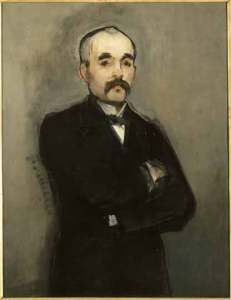
‘Georges Clemenceau’ (1879–80), Edouard Manet. Musée d’Orsay, Paris. © RMN-Grand Palais (musée d’Orsay) / Hervé Lewandowsk
In terms of French historical memory, Georges Clemenceau is a sort of left-wing Winston Churchill; as a journalist, outspoken politician, novelist and ultimately victorious wartime leader, his CV is possibly even more staggering than that of his British equivalent. Unlike Churchill, though, Clemenceau (nicknamed ‘the Tiger’) never had artistic pretentions of his own, perhaps wisely confining himself to collecting and criticism. A supporter of the contemporary painting and photography, he befriended the likes of Nadar, Manet and Monet, and commissioned the latter to create a flower garden at his house in the Vendée.
Less well-known, at least on this side of the Channel, is Clemenceau’s enthusiasm for Buddhism and oriental art. From the 1890s until his death in 1929, he amassed a stunning collection of ornaments, objects and prints from across East and South-East Asia, even writing Le Voile du Bonheur (1901), a play set in China that borrowed heavily from classical Chinese drama. Clemenceau’s collection and the links to the notable figures who shared his interests are the subjects of ‘le Tigre et l’Asie’, an exhaustive new exhibition at Paris’s Musée Guimet (until 16 June), one of Europe’s oldest and most imaginative museums of Asian art.
Clemenceau’s interest in Asia is widely assumed to have been initiated by an 1872 meeting with the Japanese nobleman and politician Saionji Kinmochi, an encounter which led him to read widely on Buddhism and begin his life-long fascination with oriental – and particularly Japanese – culture. He wasn’t alone in his enthusiasm – ‘Japonisme’ became extremely fashionable in late-19th century France, with ceramics and prints in the style of Hokusai becoming standard decoration in the homes of the new élite of the Third Republic. Many such objects are presented here, including some miniscule but extraordinarily detailed Edo-period effigies of Nō actors in faience and a huge repertoire of beautiful Kōgō incense boxes, originally used to accompany the serving of tea.
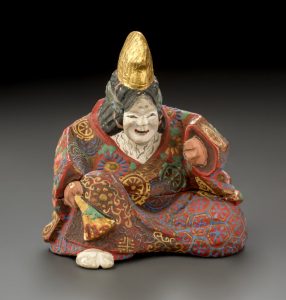
Akahada Yaki Incense Box (kôgô), Nō actor, Japan, Gojô (Nara), Edo period (1603-1868), c. 1870. © Photo MBAM, Christine Guest
Clemenceau’s interest, though, stretched further than mere ornamentation – he attended several Buddhist ceremonies and became little short of obsessed with the religion. One such ceremony was held in the library of the Musée Guimet itself. The exhibition opens up the extraordinary circular room, practically unchanged since 1891, when the ritual took place. Prints of similar events from contemporary newspapers give an impression of what such events constituted; if these illustrations can at times seem almost chintzy, they nonetheless give some insight into how such cross-cultural practices were perceived by the wider bourgeoisie.

Hokusai Katsushika, Fresh wind on a cold morning, série: 36 views of Mount Fuji Japon, Edo period (1603-1868), c. 1831–1833. Saint-Vincent-sur-Jard, maison de Georges Clemenceau. © Hervé Lewandowski/Centre des monuments nationaux
Perhaps because it presents a more immediately arresting narrative, the section detailing Clemenceau and Monet’s friendship and the influence the former’s interests had on the painter is the real centrepiece of the exhibition. One of Hokusai’s 36 views of Mount Fuji is juxtaposed with Monet’s rendering of Mount Kolsaas in Norway – the influence in framing, composition and treatment of light are suddenly inescapable. Other prints of women in kimonos, vegetation and buildings find similar parallel’s with Monet’s work, and it’s intriguing to discover that without Clemenceau’s involvement, the artist could never have accomplished much of his later work; it was only at the former prime minister’s insistence that Monet agreed to undergo surgery to remove his cataracts.
Following the First World War and his departure from office in 1919, Clemenceau took a grand tour across Asia, represented in the exhibition by a bewildering number of photographs and documents. It’s at this point that an unignorable complication becomes apparent; for all Clemenceau’s progressive views and obvious enthusiasm for the East, the fact remains that he was an instrumental player in an exploitative colonial society, for a time presiding over an Empire that dominated many of the ancient Buddhist societies he so venerated.
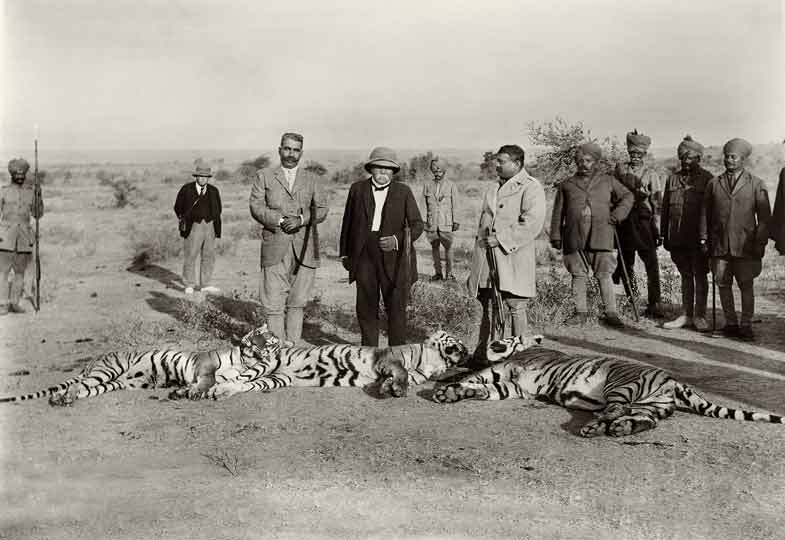
Hunting tigers in Gwalior. L-R Georges Clemenceau, the maharajah Ganga Singh of Bikaner and the maharajah of Gwalior, Madho Rao Scindia, 1921. © Collection musée Clemenceau, Paris/DR
French control of Indochina – modern day Vietnam, Cambodia and Laos – was already well established by the time ‘the Tiger’ became prime minister in 1906, and its scope was as prejudiced and morally dubious as any European regime in Asia. In 1907, under his watch, the supposedly egalitarian French Republic initiated a hostile land-grab from the (Buddhist) kingdom of Thailand. According to Edward Said – a name impossible to avoid in any discussion of Orientalism – Clemenceau himself was a strong advocate of levying troops from the colonies to serve as cannon fodder in place of metropolitan Frenchmen. Enlightened? Hardly.
Nevertheless, the exhibition at the Musée Guimet treads a careful and well-judged path through this minefield of retribution and postcolonial guilt. On the strength of its exhibits alone, ‘le Tigre et l’Asie’ is remarkable; it would be an impressive haul even without the link to European historical celebrity. But as a document of taste, patronage and orientalism in Belle Époque Paris, it’s little short of revelatory.
‘Clemenceau, le Tigre et l’Asie’ runs at Musée Guimet, Paris until 16 June.
Unlimited access from just $16 every 3 months
Subscribe to get unlimited and exclusive access to the top art stories, interviews and exhibition reviews.


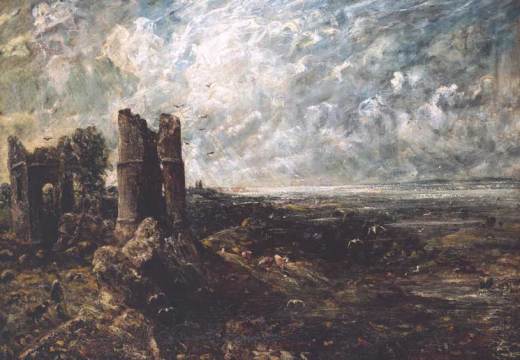
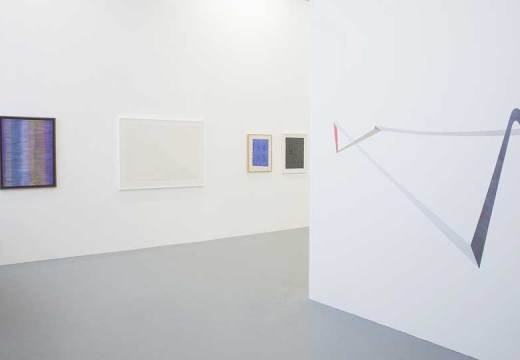
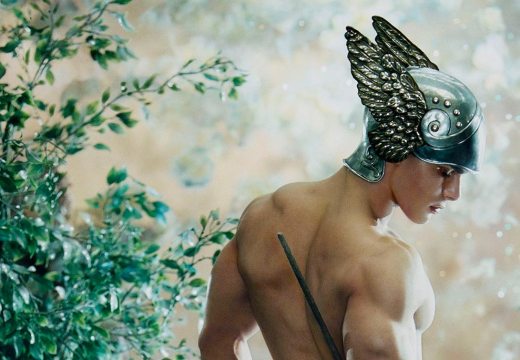









![Masterpiece [Re]discovery 2022. Photo: Ben Fisher Photography, courtesy of Masterpiece London](http://www.apollo-magazine.com/wp-content/uploads/2022/07/MPL2022_4263.jpg)
Why are fathers so absent from art history?